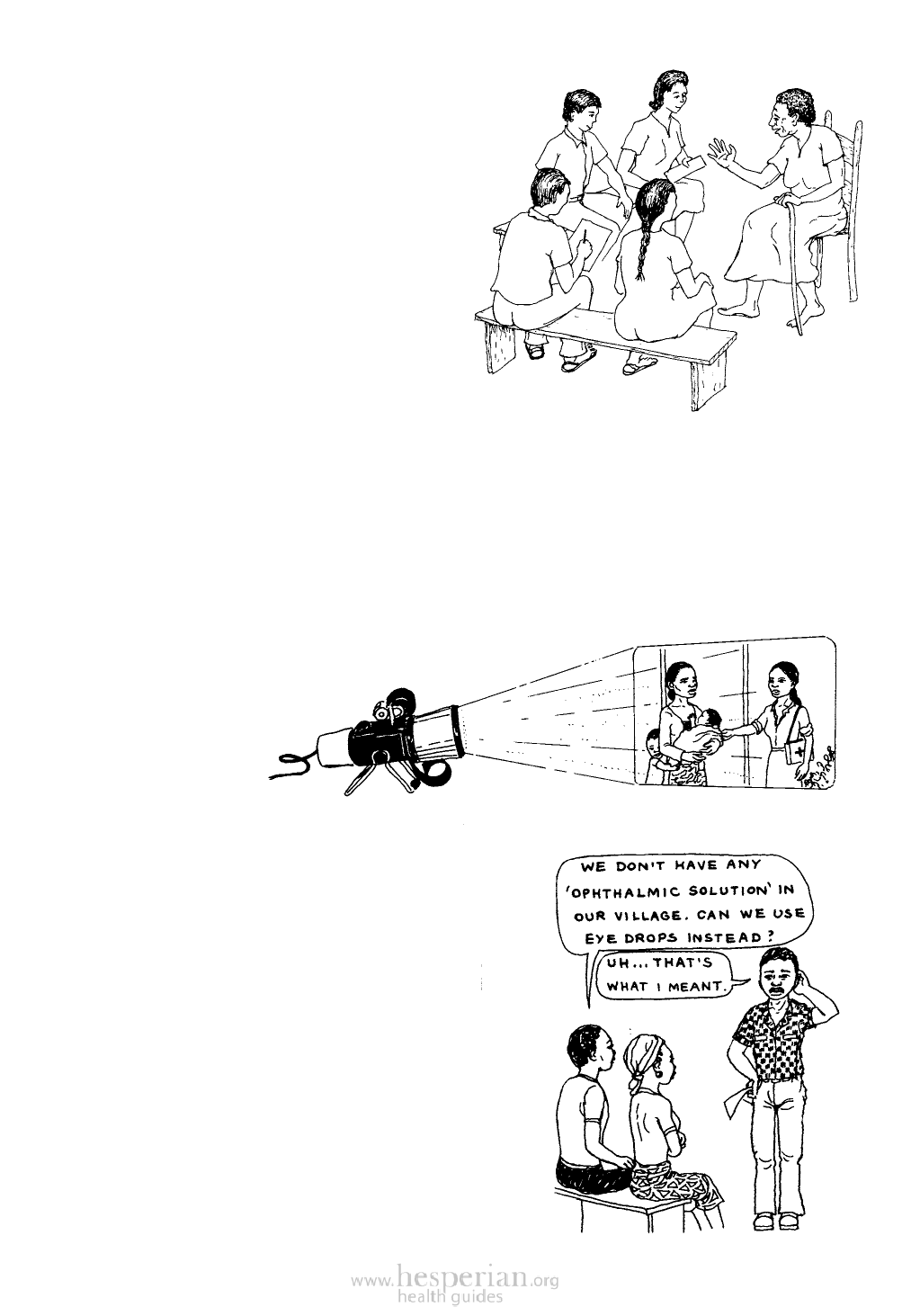
6-5
• Inviting traditional healers, herb
doctors, midwives, and other
persons from the community to
take part in classes that deal with
their special skills.
One of the most memorable classes
we have seen took place when a
village midwife was invited to meet
with a group of health workers-in-
training. Together, they made lists of
the specific information and skills that
local midwives could share with health
workers, and that health workers could
share with midwives. (See p. 22-4.)
• Inviting mothers and children from the community to help with role plays
and other activities. Health workers need practice in dealing with the health
needs of mothers and children. Role playing can help. But having health workers
play the roles of babies is not very convincing. It is more realistic if village
mothers can be persuaded to bring their small children to class, pretending they
have certain health problems. (Real problems may be found as well.) This makes
learning much more alive and exciting for everyone. See Chapter 14 for more
ideas.
• Inviting members of the community
to see slide shows, videos, or other
presentations. Most
people love
to see photos
and videos.
When these
are shown
to health
workers as part of their training, invite
members of the community, too, and include
them in the follow-up discussions. If health
workers live with families, be sure they
invite them.
• Use of clear, simple language, teaching
aids, and methods that everyone can
understand. It is important for instructors
to keep their language simple and clear, so that
anyone can understand. This way, health workers
will not have to ‘translate’ what they have
learned in order to share it with villagers.
If community people are present at some
classes, encourage them to interrupt and
ask for an explanation each time they do not
understand a word. This helps both instructors
and students to keep their language clear and
simple. (See p. 2-16.)